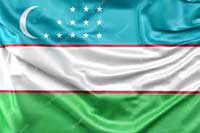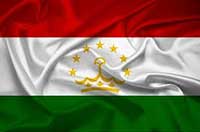Foreign Direct Investment Trends Into Central Asia
Analysis from the Uzbek Institute of Macroeconomics
Analysts from the Uzbekistan Institute of Macroeconomic and Regional Studies have conducted a comprehensive assessment of the level of economic cooperation between the Central Asian countries.
Their analysis covered various key indicators such as mutual trade, trade value, investment, and tourism and migration flows. Using data from 2017 to 2021, the researchers calculated the cooperation index for the region and found a marked increase from 28% to 38%, representing a 1.3x increase over the five-year study period.
The surge in mutual investment among countries in the region has played a vital role in spurring regional growth. The share of investment flows between countries increased by an impressive 5.6 times compared to the investment flow volumes. These joint investment efforts have proved useful in stimulating economic development and strengthening ties among the countries of Central Asia.

Kazakhstan

In terms of investment attractiveness, Kazakhstan, the region’s largest economy, hit a significant milestone in 2022, attracting a record US$28 billion in foreign direct investment (FDI) over the past decade. Leading the list of investors were the EU, the United States, South Korea and China, with FDI ranging from US$8.3 billion (Netherlands) to US$1.4 billion (China) last year.
Analysing the inflow of investments from the countries of the region to Kazakhstan, noteworthy figures were recorded. Kyrgyzstan contributed US$7.7 million, Turkmenistan US$300,000, Tajikistan US$100,000, while Uzbekistan did not register. In comparison, in 2017, investments from Kyrgyzstan were not reported, while Turkmenistan accounted for US$2.4 million, Tajikistan for US$600,000 and Uzbekistan US14.4 million.
In 2022, Kazakh investors showed their growing confidence by investing a record amount of more than US$4.2 billion in other economies, the highest in five years.
Uzbekistan

Uzbekistan, on the other hand, received a total FDI inflow of over US$8 billion in 2022, 3.5 times lower than Kazakhstan. The country has attracted US$70.4 million from Kazakhstan and US$61,000 from Kyrgyzstan, while there is no investment data from Turkmenistan and Tajikistan.
It is apparent that over the past five years the number of companies with the participation of regional capital in Uzbekistan has grown significantly. For example, in 2017 there were 229 companies with Kazakh capital, 49 from Kyrgyzstan, 25 from Tajikistan and 9 from Turkmenistan. However, by the end of 2022, the number of companies with investments from these countries has grown to more than 1200 from Kazakhstan, almost 300 from Kyrgyzstan, about 200 from Tajikistan and more than 180 from Turkmenistan.
Kyrgyzstan

Kyrgyzstan, according to official data, recorded an inflow of foreign direct investment that exceeded US$1 billion in 2022, maintaining a similar figure from the previous year. Turkiye was the leading investor with US$321 million, followed by China with US$275 million and Russia with US$133 million.
Kazakhstan was the leader among the countries of the region in terms of the amount of capital invested in the economy of Kyrgyzstan, amounting to US$52.4 million. However, this figure is at odds with the official figures from Kazakhstan, which reported US$197 million. Such discrepancies may arise due to differences in the methodologies used by the two countries when calculating FDI inflows and outflows.
Tajikistan

According to the State Investment Committee, in 2022 Tajikistan attracted about US$430 million in foreign direct investment from other countries. Despite this achievement, the indicator remains significantly lower compared to Kazakhstan at 65 times, Uzbekistan at 18 times and Kyrgyzstan at 2.3. Experts attribute Tajikistan’s significant lag to unfavourable geography, an unattractive investment climate and business environment, red tape, corruption, a weak rule of law, a high tax burden, and the lack of a stock market, among other factors.
Source: UPL
Related Reading





